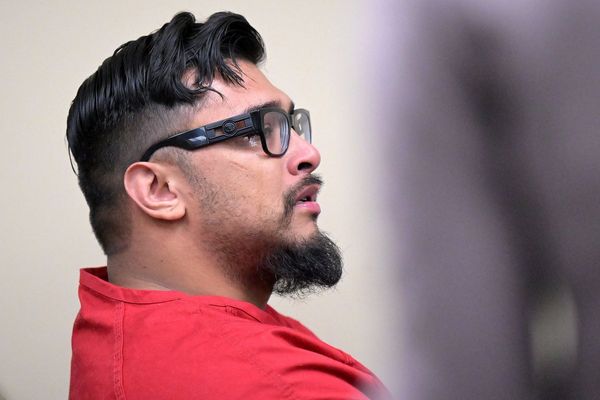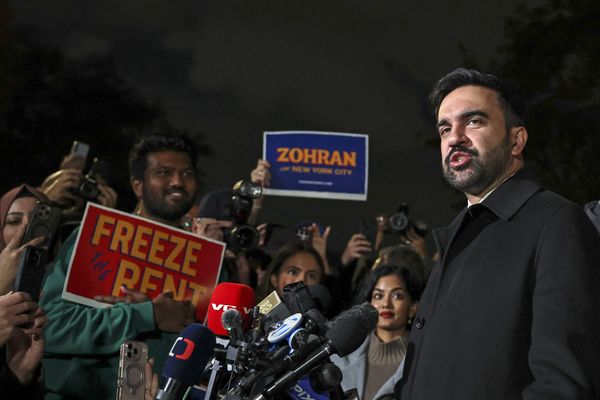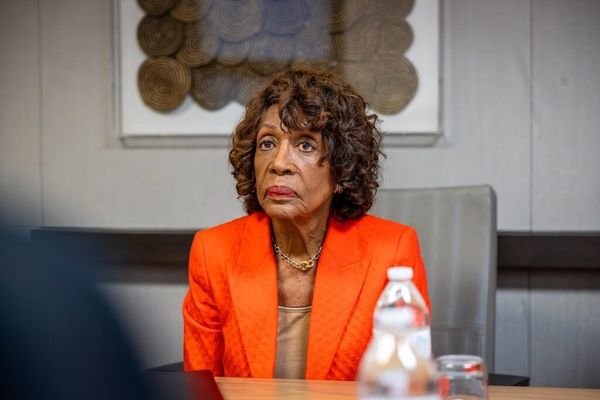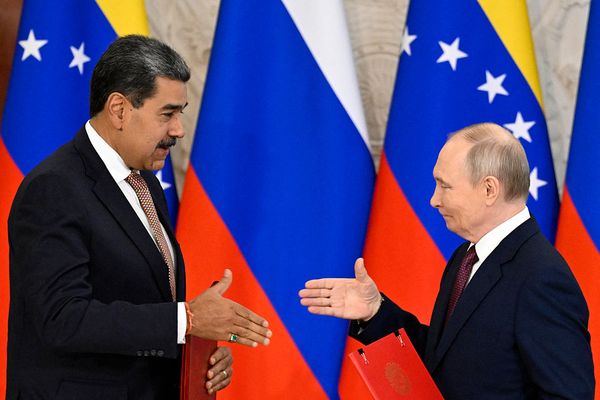On Wednesday, the en banc Fifth Circuit decided Environment Texas Citizen Lobby v. ExxonMobil. The procedural posture of this case resides in the ninth circle of Dante's Inferno. I won't even try to explain it here. Instead, I will try to make sense of the extremely unusual split.
Reuters reported the case as a 9-8 split. Not quite.
The case was heard before seventeen members of the en banc court: Elrod, Davis, Jones, Smith, Stewart, Richman, Southwick, Haynes, Graves, Higginson, Willett, Ho, Duncan, Engelhardt, Oldham, Wilson, and Douglas. (Judge Ramirez joined the court after the case was submitted so she did not participate). Simple math would suggest that a majority of a seventeen member court would require nine votes. But there is no actual nine member majority.
Seven members of the court would have affirmed the District Court's decision from April 2017: Davis, Stewart, Southwick, Haynes, Graves, Higginson, and Douglas.
One member of the court would have reinstated a panel majority opinion from 2022: Chief Judge Elrod.
Eight members of the Court would have reversed the District Court's decision: Jones, Smith, Richman, Willett, Duncan, Engelhardt, Oldham, and Wilson.
For those of you counting at home, you will notice I've listed sixteen judges so far. Who is #17? Judge Ho. He did not vote to affirm or reverse. Instead he voted to dismiss rehearing en banc as improvidently granted--a DIG in the parlance. The Supreme Court will often DIG a case, but on rare occasion, an individual Justice will vote to DIG. Justice Gorsuch has individually DIG'd a few cases.
As I count things, the split is 7 votes to affirm the district court, 8 votes to reverse the district court, and 2 votes to do something else. Is your head spinning? Well then turn to 2 of the PDF. There is a paragraph labelled "Per Curiam." That paragraph concludes, "We accordingly AFFIRM the judgment of the district court, dated March 2, 2021." I use scare quotes quite deliberately. Per Curiam is Latin for "by the Court." But there is not a single thing that nine members agreed upon. Who exactly is the "We" in that final sentence. I can only count to seven. This paragraph labelled "Per Curiam" cannot possibly be "by the Court." Who assembled the second page of the PDF? I have more questions than answers.
Is your head still spinning? Well, check the docket. Immediately after the opinion was filed, a judgment was entered. It states:
IT IS ORDERED and ADJUDGED that the judgment of the District Court is AFFIRMED.
IT IS FURTHER ORDERED that Appellants pay to Appellees the costs on appeal to be taxed by the Clerk of this Court.
W. Eugene Davis, Circuit Judge, concurring, joined by Stewart, Southwick, Haynes, Graves, Higginson, and Douglas, Circuit Judges.
James C. Ho, Circuit Judge, in support of dismissing rehearing en banc as improvidently granted.
Edith H. Jones, Circuit Judge, joined by Smith, Richman*, Willett, Duncan, Engelhardt, Oldham, and Wilson, Circuit Judges, dissenting.
Priscilla Richman, Circuit Judge, dissenting.
Andrew S. Oldham, Circuit Judge, joined by Jones, Smith, Willett, Duncan, Engelhardt, and Wilson, Circuit Judges, dissenting.
By what authority did the Court issue that the judgment of the District Court should be affirmed, if only seven out of seventeen judges voted to affirm the judgment of the District Court?
If you've followed this far, hang on. This will get messy.
The starting point for this analysis is Judge Ho's concurrence. He explains what the effect of his DIG is:
When eight judges would affirm, eight judges oppose affirmance, and one would dismiss as improvidently granted, then our court lacks a sufficient majority to do anything other than affirm—as Judge Richman's dissent appears to acknowledge.
I think that Judge Ho would group Judge Elrod with the Davis-Seven as affirming. But Elrod was voting to affirm something different than the Davis-Seven. The Davis-Seven would affirm the District Court's decision. Elrod would affirm a panel opinion. But maybe those can be lumped together for purposes of determining whether a court is evenly-divided. I'm not sure.
If that math is right, there are eight votes to affirm (Elrod+Davis-Seven) and eight votes to not affirm (the Jones dissent). Judge Ho, by DIGing the case, did not cast his judgment to affirm or not-affirm, so he falls into neither camp. As a result, the en banc court effectively split eight-eight. It is as if a sixteen member court (with a recusal) was evenly divided. And what happens if the en banc court is evenly divided? Ho says that the judgment of the lower court would be affirmed.
Judge Richman wrote a separate partial dissent that I think supports Ho's reading:
The en banc court should have issued a simple per curiam opinion that recognizes where the votes lie, based on the divisions among us, and that announces the judgment of the en banc court, which is affirmation by operation of law because a majority was lacking after the en banc court considered the issues.
In other words, absent a majority opinion for the en banc court, the default rule "by operation of law" is to affirm the lower court decision.
I want to focus on this phrase, "by operation of law." What law? Neither Judge Richman nor Judge Ho cites any such rule. You can search the Fifth Circuit's local rules to find what happens if there is an evenly divided en banc court, but there is nothing there. Fifth Circuit Rule 41.3 discusses what happens if the en banc court loses a quorum:
41.3 Effect of Granting Rehearing En Banc. Unless otherwise expressly provided, the granting of a rehearing en banc vacates the panel opinion and judgment of the court and stays the mandate. If, after voting a case en banc, the court lacks a quorum to act on the case for 30 consecutive days, the case is automatically returned to the panel, the panel opinion is reinstated as an unpublished (and hence nonprecedential) opinion, and the mandate is released. To act on a case, the en banc court must have a quorum consisting of a majority of the en banc court as defined in 28 U.S.C. § 46(c).
But the rule is silent about what happens if the en banc court evenly divides. It is a poorly-kept secret that the Fifth Circuit has secret "nonpublic internal court policies" that members of the bar are not allowed to read. (Judge Willett lifted the veil on those rules in 2019.) Still, I doubt any such rule exists about the en banc court.
We all know that a 4-4 tie at the Supreme Court affirms the lower court "by operation of law." Certainly, the Supreme Court has such a rule inside its voluminous rule book? Right? It does not. A 2020 student note in the Houston Law Review by Aditi Deal observed the "marked lack of rules about equally divided votes, recusals, or vacancies." Instead, the rule stems from a FedCourts classic, Hayburn's Case (1792). That decision split 3-3, which had the effect of denying mandamus. Three decades later in The Antelope (1825), Chief Justice Marshall wrote that "Where the Court is equally divided, the decree of the Court below is of course affirmed, so far as the point of division goes." It's not clear there was any actual law to support this holding, especially since there was no majority opinion! Maybe this was the practice in England, but it was never firmly established in any positive American law. Maybe this model is something of a rule of necessity? In other words, if a court has to issue some judgment, this rule allows the evenly-divided court to issue some judgment, even if it lacks majority support.
This point brings me to an opinion I have not yet mentioned: Judge Oldham's dissent, which was joined by seven other members. Much of Oldham's dissent focuses on the standing issue and the merits, which I will not address here. Instead, I will articulate the differences--as I see them--between how Judges Ho and Oldham view this case, and the judicial power more broadly.
Oldham articulates that that a court must issue a judgment, full stop. Appellate judges are not required to write opinions. However they have to resolve the case in front of them: affirm or reverse some other judgment. It is true that en banc is a discretionary jurisdiction, and there is no obligation to grant rehearing en banc. But once a majority of the Court vacates the panel opinion, it takes a majority of the Court to render some new judgment, for example, to reinstate the panel opinion. If a majority of the court does not coalesce to render some new judgment, the case will remain in a state of limbo.
But what about the more conventional eight-eight split, where the judgment below is affirmed "by operation of law" (to use Judge Richman's lingo)? There is no actual statute or court rule that provides as such. Perhaps there is some ancient Fifth Circuit panel, or en banc precedent, that explains what happens with an evenly-divided court. But I'm not certain than an en banc decision that resolves a particular case, can establish a court rule of how to render judgments in all other cases. I think something like this would have to be adopted by a majority of the court as a rule of the court--but I am not certain on this last point.
Absent such a rule, on what basis can the clerk enter a judgment of "affirm" if a majority of the Court has not acted? Seriously!? In this case, who instructed the clerk to enter an "Affirm" judgment on the docket? Did the clerk make a judgment about how to construe Judge Ho's opinion? I do not mean to criticize the clerk, or any member of the Fifth Circuit here. This is an exceptionally complicated case. I am simply raising questions that are not evident to me from the face of the opinion.
The implication from Oldham's concurrence are significant. As I read his opinion, if a judge on a multi-member court is the deciding vote, he has an obligation to render his own judgment, so that the court as a whole can render its judgment. And according to Judge Oldham, a DIG is not a judgment at all. In the run-of-the-mill en banc case, where there are sixteen votes to reverse the district court, and one vote to DIG, I don't think Judge Oldham would see any obligation for the judge to render a judgment. But with an effective 8-8 split, where Judge Ho is the deciding vote, I think Oldham sees Judge Ho as having an obligation to vote one way or the other to ensure the en banc court issues some judgment. And, according to Oldham, Ho's failure to cast a vote was a violation of some judicial duty.
I take it that if Judge Ho had simply concurred in the judgment, and wrote exactly what he wrote, then Judge Oldham would have had no quarrel. There would have then been eight square votes to affirm, in which case, per The Antelope, the judgment of the lower court would be affirmed. The problem for Judge Oldham is that Judge Ho did not concur or dissent from the judgment.
What is the basis for this obligation? Judge Oldham's opinion reads like it was written by a FedCourts professor (which he is). It is fairly dense, and goes back to the judicial duty in Roman times. (Richard Epstein would be proud.) Judge Ho responds, "I like history too, but nothing in his historical gesturing remotely demonstrates how justice or tradition requires appeal before seventeen judges rather than three." Judge Oldham acknowledges, "You might be wondering: What does any of this have to do with courts of appeals and en banc rehearing?" He then answers his own question. "The answer is: Nothing."
But I don't think it is quite nothing. If Judge Oldham is correct, and there is some sort of obligation for a judge to vote for a judgment to ensure that his multi-member court issues a judgment, then this history is extremely relevant, and the criticism of Judge Ho's opinion is apt.
Is Judge Oldham correct? At this point, I would respond "not proven." I have no idea if such an obligation exists. But the place to make this argument for the first time is not in the heat of a contentious en banc battle where you are trying to count thumbs up or thumbs down, pollice verso. Rather, this sort of robust theory should be developed outside the coliseum where the outcome of this bout is unknown.
The fact pattern here is so bizarrely unique, I am doubtful any multi-member court has ever dealt with something like this. To be sure, en banc courts have dismissed grants of en banc as improvidently granted. (I wrote a post on this issue after the Tenth Circuit DIG'd a grant of en banc in the bump stock case). But in that case, there was a clear majority of the Court that voted to DIG. And I don't take Judge Oldham as having any objection if a majority of the court wishes to vacate its grant of en banc (a VIG as he calls it).
Perhaps there is a classic piece of scholarship that could inform this inquiry: Lon Fuller's The Case of the Speluncean Explorers. In this fictional case, the Supreme Court of Newgarth considers whether to affirm the death sentence of hikers who were trapped in a cave, and resorted to cannibalism. There is a five member court. Two members vote to affirm the death sentence. Two members vote to reverse the death sentence. The fifth member of the Court, Justice Tatting, declines to vote. He found the case so difficult that he simply withdrew:
Since I have been wholly unable to resolve the doubts that beset me about the law of this case, I am with regret announcing a step that is, I believe, unprecedented in the history of this tribunal. I declare my withdrawal from the decision of this case.
Not quite a DIG, but it has the same effect. When it becomes clear that the case is split 2-2, Justice Tatting is asked to reconsider his vote:
I have been asked by the Chief Justice whether, after listening to the two opinions just rendered, I desire to reexamine the position previously taken by me. I wish to state that after hearing these opinions I am greatly strengthened in my conviction that I ought not to participate in the decision of this case.
What follows is the judgment of the Court. And to be clear, there is not a majority of the Court to support any such judgment:
The Supreme Court being evenly divided, the conviction and sentence of the Court of General Instances is affirmed. It is ordered that the execution of the sentence shall occur at 6 a.m., Friday, April 2, 4300, at which time the Public Executioner is directed to proceed with all convenient dispatch to hang each of the defendants by the neck until he is dead.
Sounds familiar, huh?
This is the third time I've cited the Speluncean Explorers in the last few months. One of the Justices of Newgarth asked the Executive for clemency. And in Roberson v. Texas, Justice Sotomayor asked Governor Abbott for an executive reprieve. (The aftermath of that case in the Texas legislature and the Supreme Court of Texas demonstrates that Sotomayor was wrong.) And in Glossip v. Oklahoma, we may yet see a request for executive clemency if the Court evenly divides 4-4.
I hope this post was helpful. This was one of the more confusing en banc decisions I can recall. I agree with much of the frustration all of the judges expressed with such splintered opinions. And I feel for the parties who have to make sense of this mess. Perhaps one of the few upshots is that, as Judge Ho noted, there is no circuit precedent established, and a new three-judge panel can resolve the issue fresh. Still, I'm not yet persuaded any Article III judge has any obligation to cast a vote to avoid these situations. I'm sure that many judges simply join en banc opinions, even if they do not agree in whole, for the sake of clarity of the law. That is certainly one way to approach the judicial function, but it is by no means a judicial duty.
The post Making Sense of the 7-1-1-8 Split in <i>Environment Texas Citizen Lobby v. ExxonMobile</i> appeared first on Reason.com.







